I had the pleasure of touring some of the leading horse breeding and training facilities in the country while I was at a professional conference in Gainesville, Fla. But the most remarkable visit on my tour was to the home of Rugged Lark, the famous American Quarter Horse stallion, because he defied all of the legends about the unpredictability and dangerous behavior of stallions. The handsome bay displayed his docile and cooperative temperament in one unique way after another. I watched with the other spectators in stunned silence as Rugged Lark’s rider and trainer Lynn Palm guided him through freestyle dressage tests and over obstacles with just her lower-body aids and a garland of flowers around his neck. This stallion’s behavior struck me because it was so unusual to see.
A few months later, I encountered stallion behavior many people would consider more normal at the horse facility where I did my behavioral research. I was walking around the grounds, past the rows of stallions I thought I knew so well, when I was overcome by an excruciating pain. One moment all was right with the world, and the next moment I was sailing through the air, landing face first on the hard ground.
I looked back at the normally gentle, middle-aged stallion that had just attacked me, and observed his displays of aggression directed at the brand-new stallion in the adjacent paddock. It was clear that I had been the target of misdirected aggression between them.
What is the truth about stallion-like behavior? Is it those things we love best about horses—charisma, nobility, controlled fire—or is it something vicious and unpredictable that should be checked by gelding the horse?
What is the truth about stallion-like behavior? Is it docile and cooperative, or aggressive and dangerous like popular legend? Is it those things we love best about horses—charisma, nobility, controlled fire—or is it something vicious and unpredictable that should be checked by gelding the horse? Which gender makes the most easily trained riding horses, and which is the best for a performance horse?
Mares, Stallions, and Geldings
Although gender isn’t the only determining factor, a horse’s sex does play a significant role in behavior. Survival and reproduction are the two driving forces of all animals, including horses. Personal survival dictates that they must find food, water and protection from the elements above all else. When those basic needs are met, sexually intact animals (those who haven’t been gelded or spayed) treat the call of their reproductive hormones as the next priority. These hormones ensure the survival of the species and drive animals to send their hereditary attributes into the next generation, giving them a sort of immortality through their offspring.
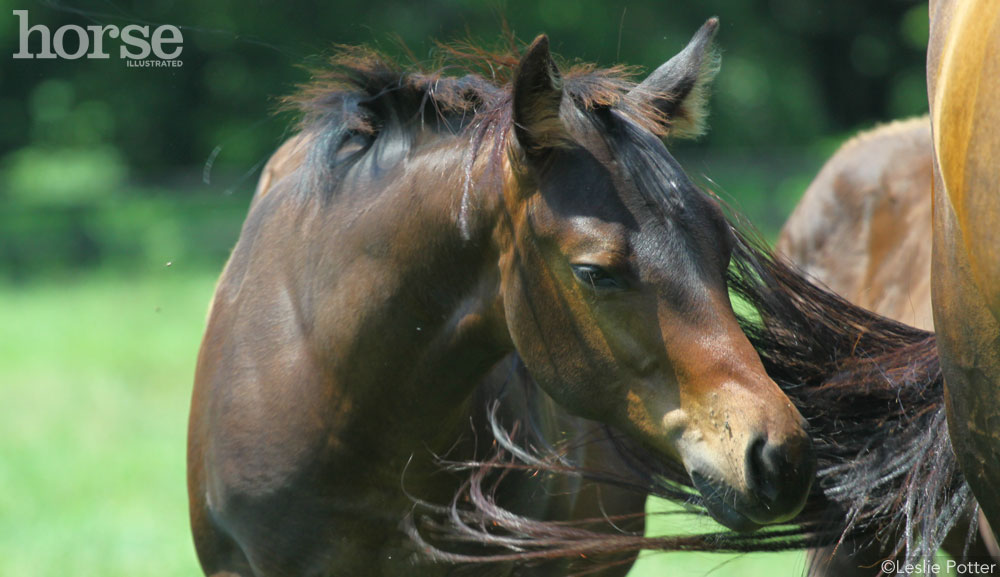
Hormonal signals tell horses when to breed, and during those times it is a very important item on their agendas.
For mares, the breeding urge is seasonal and cyclical, but for stallions, the drive is ever-present. Libido in stallions is driven by the hormone testosterone, which is primarily produced by specialized cells of the testicles called leydig cells in response to chemical signals from the brain’s hypothalamus and pituitary gland. These chemical messengers are more active when the days are longer, increasing testosterone production to coincide with the time that mares are most fertile and receptive to breeding.
But even during the winter, when most mares are unwilling to breed, stallion behavior is still under the direct influence of testosterone, maintaining some degree of libido, sperm production and secondary sex characteristics. This maintains the drive in stallions to seek out prospective new mates and to check them for willingness to breed.
The Pros and Cons of Testosterone
This is what makes stallions such unique animals, giving them that brilliance, that something extra. In his book Lyons on Horses, John Lyons explains “…reproductive drive is behind many of the stallion’s behaviors … If we recognize this, we can deal with it in a logical manner. We’ll teach the stallion when and where to use this inner drive, when it’s okay to breed and when it’s not. But because of the stallion’s strong purpose in life, we’ll need to invest more time in his training. It may take us two hours to train the gelding, five hours to train the mare and 20 hours to train the stallion.”
This drive to breed makes stallions exceptional performance prospects for highly experienced riders. If the stallion’s strongly driven sexual behavior can be controlled through proper training and that energy channeled into athletic endeavors, they can indeed be the species’ most brilliant members. Consider, for example, the performances of 1996 Olympic dressage sensation Peron and 1984 Olympic gold and silver medal-winning international show jumper Abdullah.
On the other hand, stallion-like behavior can make “studs” difficult to train and potentially very dangerous, particularly in inexperienced hands. Even those stallions with unusually docile temperaments need to be handled properly by expert horse people at all times. Even “nice” stallions can be lethal to novice handlers. For this reason, unless a horse has a one-in-a-million combination of top-quality conformation, temperament and bloodlines, and the owner intends to use him for breeding — or sell him as a stud — most trainers would advise owners to geld horses intended for everyday riding or showing.
Brain Surgery
A horse’s behavior changes after gelding because of the quick and marked drop in blood testosterone levels. In horses, testosterone levels plummet to less than half their original levels very quickly after gelding. Without high testosterone in their blood, geldings are not hormonally driven and distracted by the urge to reproduce, so they are able to devote more attention to their training. This makes them generally easier to train than stallions, with more consistent behavioral tendencies. Gelding is also believed to alter a horse’s personality, making him less moody and more complacent.
On rare occasions, stallions that are gelded after puberty continue to display stallion-like behavior. This problem is most common in horses that formerly had careers as breeding stallions, and occurs because of what was “learned” through sexual experience. Other good reasons for early castration are that geldings can end up taller than stallions due to later closure of long bone growth plates, and that the chances of intestinal herniation as a post-surgical complication are fewer.
Mareish
Mare behavior tends to fall between that of geldings and that of stallions. Some horse handlers call the erratic behavior some mares exhibit during estrus “mare-ish” behavior. They are typically referring to the distracted attitude and edgy nature of certain mares that are more interested in finding mates and breeding during this time than they are in anything else.
Starting sometime around April and going approximately through September in the Northern hemisphere, the increased day length stimulates the mare to initiate 21- to 23-day reproductive cycles known as estrus cycles. During an estrus cycle, the typical mare will spend around five to seven days in heat, primarily under the influence of the hormone estrogen, and will ovulate near the end of that period of breeding receptivity. This can cause problems when it interferes with athletic performance or when it causes mares to become cranky and unpredictable, presenting dangers to their human handlers.
During the shorter days of the year, more mares are sexually inactive and unresponsive, behaving very similar to geldings. During the remaining 14 to 16 days of the cycle, they are primarily under the influence of the hormone progesterone and are not interested in breeding at all.
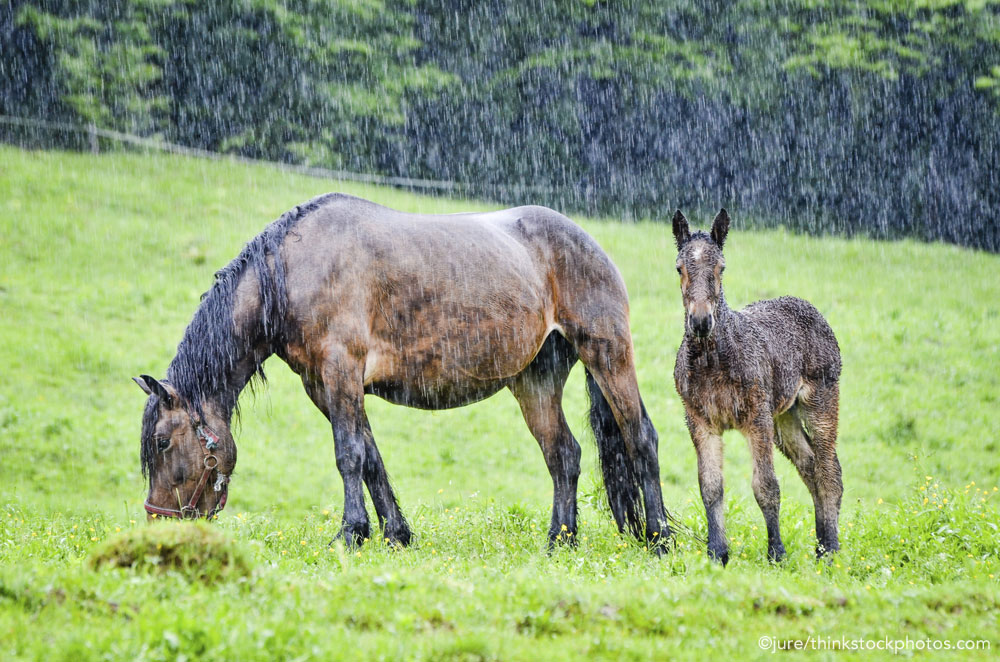
For mares affected by behavioral problems during estrus, there are various products utilizing the reproductive hormone progesterone, which can be prescribed by veterinarians to keep them out of estrus. However, these may cause side effects in some mares.
Because removal of the ovaries or spaying in mares is a major surgical procedure, it is generally not done unless for medical reasons, such as for certain ovarian tumors. Most mare owners are either not aware of the behavioral changes during estrus or are not disturbed enough by them to invest in medical treatment. Of course, many mares are wonderful riding horses, brilliant show horses and powerful athletes that perform consistently despite the influences of estrus.
This column has highlighted the most obvious differences in behavioral tendencies of stallions, geldings and mares. The “best” gender depends on the ability, experience and preference of the rider, as well as the job required of the horse. Remember that generalizations about gender are simply guidelines, and that the temperament of the horse is ultimately the most important factor to consider. These guidelines can be used to help increase the likelihood of ending up with a compatible horse, but what matters most is finding one that can be trusted and that will be a pleasure to work with.

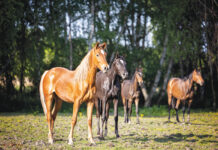
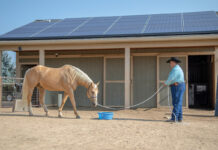
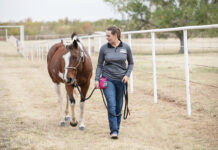
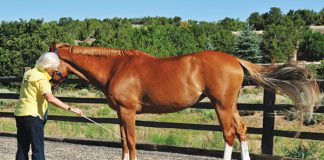

I have a Gelding that raced and was gelded late. He acts like a stud around mares and other geldings. What can I do.
Recently our 14 year old gelding became aggressive when a friend of ours brought his two geldings over for a trail ride. He was relentless, charging, biting and kicking at the other horses. This is our first experiece of this behavior. We have had him almost two years. Also, this is our 10 year old daughter’s 4-H hsrse. We are concerned about future altercations. Any suggestions about supplements or other ideas? We did have him tested by our vet and he is not producing any testosterone. Please advise. Thank you
I think this article is very informative. I have 5 geldings who are very calm and a pleasure to be around. I have 3 mares whom can be a handful when they are in season and I have 1 Stallion whom is very calm collected and just a pleasure to own. No one knows he is a stallion unless I tell them. He does not act “Studdy” at all. I have put alot of time into him with training and I will for all his life. They never stop learning. He is one that I have been told people would breed to for temperment alone but he has good conformation and breeding also.
Hormones play a huge part. However, some breeds are more pre-disposed to agression in stallions, while others are not. I have a stallion from Walking Horse lines who is very well-behaved so long as a firm hand maintains him. You must ensure the stallion respects you, not you as a play toy.
This is quite informative since I own a stallion.
In researching to geld or not geld my stallion- I have to agree with the comment that stated that certain breeds are more prone to agressive stallions and others are not. Some breeds specifically breed for femine and masculine characteristics, and if the horses are not showing feminine or masculine characteristics, those horses are not approved for breeding—this can make for some hormone charged, moody & agressive behavior in horses (these are typically warmblood horses). I have seen more docile stallions & mares emerge from breeds that do not breed in that direction.
Also remember that a stallion you see performing or a mare BOTH can be on ReguMate, and you will see a more focused horse, this is also a tool used in racing horses. Studies are out on how effective or not this is, and the side effects of using it on young stallions is diff than on older ones.
I believe the more aggressive stallions are not ness in the hotter breeds, they are in the breeds that breed for masculine & feminine characteristics
and end up with the by product of a possible ‘difficult breed’. Would like to see a study on this.
Most nice stallions would make even better geldings. That said I have had the pleasure of having a relationship with a wonderful Appaloosa stallion named Silver’s Double. A properly handled and trained stud with an experienced handler can be quite an experience. But to be honest. I prefer mares.
Good article. Would like to see some focus on the risks and drawbacks of keeping a stallion.
I have to agree with the article there are some studs that are a pleasure to be around and some you’ll stare at them going, Why do you still have your gonads?
But I had two stallions, one a 7 yr quarter horse stallion that had been bred 6 times, 7th time by me, and a 6 yo paint stallion that I had since he was 15 months, and was never bred. Both were pasture mates and never once tried to fight, but soon as they were turned out with geldings the qtr got more agressive, seperated them back to their own area they were peachy. If you tried to completely seperate them they’d be bellering for the other for hours, worse than a mare and foal.
One day in spring of 07 a friend of mine brought her mare over to cover by the paint, and when he couldnt quite figure out what he was supposed to do we decided to use the qtr instead, he was in view of the whole thing, brought him in he knew what to do and did it. After all was said and done within an hour the stallions were back in the same corral and acting buddy buddy.
Neighbor of mine has 8 stallions that are for the most part calm and we work with on a daily basis, and one of them when he first arrived about 4 years ago was as study and un ruely as can be. Actucally threw the owner and broke his leg in 3 spots few weeks after he brought him home, and he only knew a round pen for breeding but now after years and years of training, hes a gentlemen.
Its all about the training and backround that goes into the horses I honestly believe. If you don’t focus the stallion like the article says he may turn hostile, if you focus him, he will be an angel. And if they aren’t socialized well then they MAY get more agressive, but sometimes some of them just don’t play well with others.And like a few folks have mentioned, the breeds play a key in it too a bit.
We must be lucky ,because are 7 year old arabian stallion is the calmest thing in the world!We ride him with our mares on the trails just like any other horse and he never trys a thing.We have even accidently rode him with an inheat mare before and he didn’t do a thing ,it was the mare that pitched up a fit not the stud.He has bred 4 mares.He never kicks ,bites ,bucks ,or rarely fights you.Also we bought him as a registered egypyian arabian stallion without knowing a thing about him at a sale for $200 and he is our first stallion ,go figure!Sorry to brag ,but we are just so proud and fond of our stud!
Very interesting reading. Knowledge of a stallion is the besst place to start. Love reading some of the comments, too.
The Black Stallion, put at dreams into a lot of horse lovers heads, which are just that dreams.
I bought a young thoroughbred from auction for $300. He was going to be headed for the meat packers. He’s a full stallion and I’m planning on keeping him that way. When I first got him I was planning on gelding him right away but seeing his temperment and conformation I changed my mind. He’s only 2 and almost 17hh. I can have him around mares and geldings and he never gets studdy or agressive. I can work with him in the field without a halter (yes I know this is dangerous, even with a gelding or mare, but he’s safer to be around then some of the mares I know). He was totally wild when I got him but he has settled down and is one of the gentelest horses I’ve ever been around. He’s never tried to fight me or push me around. I know other stallions I wouldn’t get withing a mile of because they are down right dangerous. I think the temperment of the stallion has a lot to do with how they are handled when they are young. If your gentle yet don’t take any crap from them they learn to respect you. And sorry I’m bragging, I’m just amazed every day by how gentle my stud is.
I believe that breeding and handling have a lot to do with a stallion’s temperment, but there is far greater a chance of dangerous behaviour in a stallion than a gelding in any case.
I have a 7 year old Gelding, and the past 6 months he has become increasingly aggressive. We took measures by taking him off a sweet feed grain and all other grains for that matter. We also removed his shoes (Vet instructed) because his feet were not growing properly. The vet also did some blood and found high levels of testerone in him and now he has to have birth control inserted into him to calm him down. Ever heard of this?
Ok, so I am a “green-horn”, in fact, I don’t even own a horse yet! I love reading articles like this one because the more I can learn about these magnificent animals, the better horsekeeper I will be when I finally purchase the horses of my dreams.
Has a stallion ever shown interest in the filly or stallion that his mare or mares have bread? I am writing a story and want to know if it would be at all believable for a horse to know it’s own children!
What a awesome article!
muy interesante me gusto la informacion
I have a pony mare who is absolutely a doll when not in heat. Although, I have begun noticing that when she does come into heat, she is awful around other horses! Not standing still, wanting to pace, pawing the ground even trying to bite people. I have a big show coming up where I will be riding in a class with other horses and she will be in heat around that time. I am afraid she will act out and it will not end well for me. Any suggestions?
I have a gelding who acts exactly like a stallion, so sometimes gelding them doesn’t help!!
Great read, ….yet my issue is with proud cut gelding..stallion shooting blanks…Cajun is nine, and has been left with mares his entire life , and lightly trained by young woman, but when he became to much to handle, they choose to get rid of him, he now lives with myself and three other geldings…we have had him for about six months, sweet, yet willful, when I first started working with him, he spent most of our time together rearing…now he at least stays with all fours on the ground, on occasion will rear, and will come back to earth with verbal by me…would like to find articles on training measures for this guy..I love him so, and wish to stay safe, intention is to ride him, he is very heavy handed with the other geldings, so turn out with my others boys is limited to short times…and he has taken an aggressive dislike to my oldest gelding, who will not stand up to Cajun, thanks….Skye